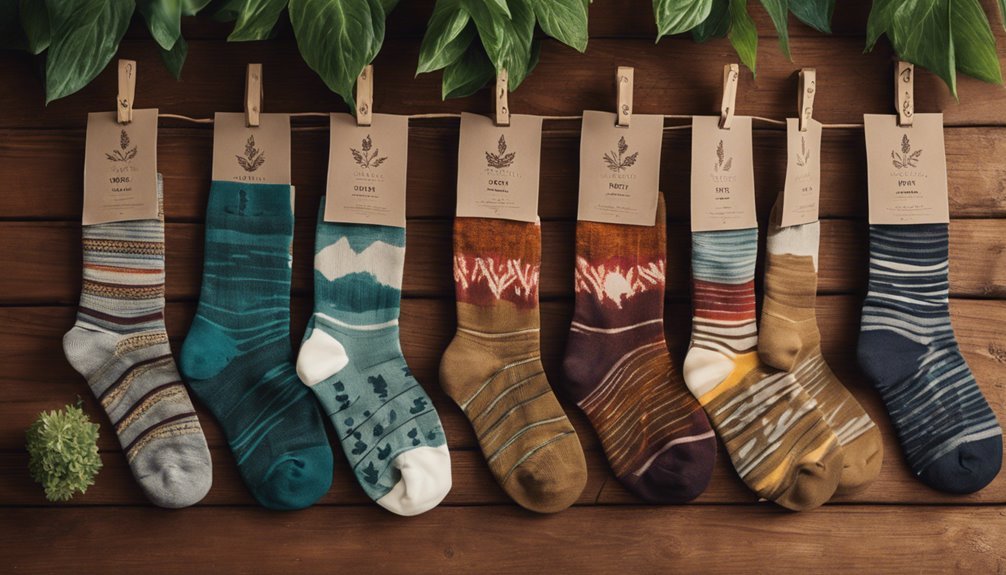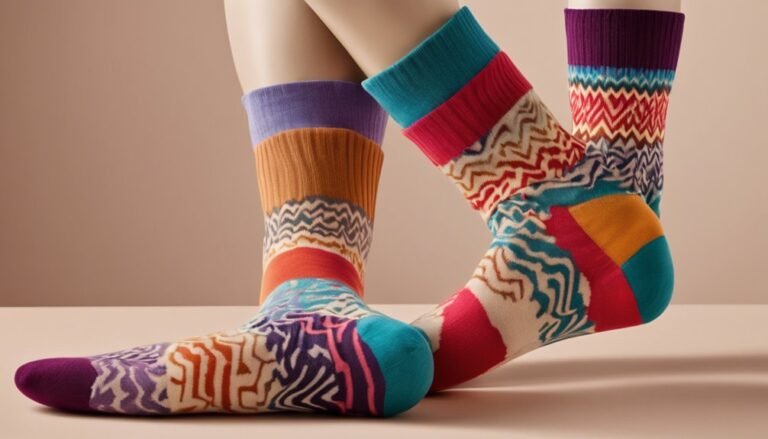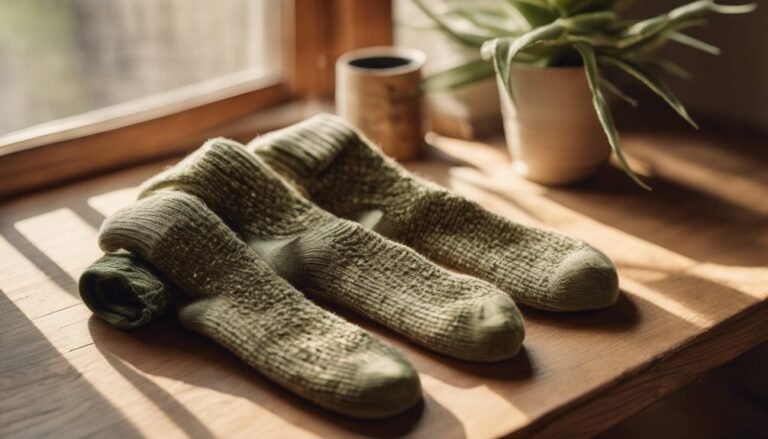How Sustainable Innovations Are Reshaping the Sock Market
Sustainable innovations are reshaping the sock market by prioritizing eco-friendly materials and production processes. You'll notice brands are shifting to biodegradable fibers, which break down naturally, and using recycled materials that reduce energy consumption by up to 70%. These efforts not only lower the carbon footprint but also encourage ethical labor practices. As consumer awareness heightens, brands are responding with transparency and sustainability in mind. There's much more to discover about how these changes are influencing the industry.
The Rise of Eco-Friendly Materials
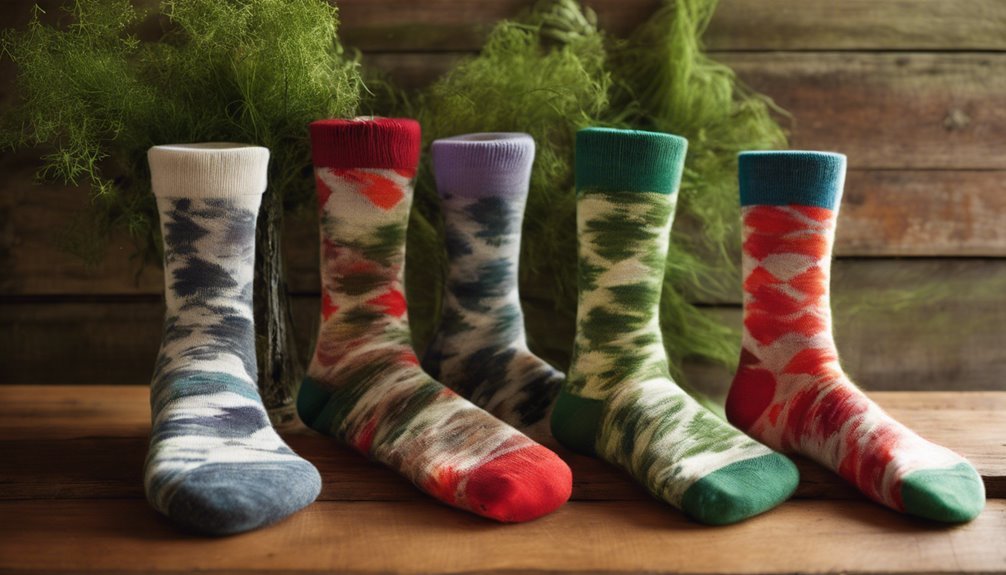
As consumers become increasingly aware of environmental issues, the sock market is witnessing a significant shift towards eco-friendly materials. You're likely noticing brands embracing biodegradable fibers and organic cotton, which are pivotal in reducing environmental impact. Studies show that organic cotton uses 88% less water than conventional cotton, making it a sustainable choice. Additionally, biodegradable fibers break down naturally, minimizing landfill waste. This trend isn't just a passing phase; it reflects a growing consumer demand for sustainable products that align with personal values. As you seek freedom in your choices, opting for socks made from these materials can empower you to contribute to a healthier planet. Embracing eco-friendly materials isn't merely a purchase; it's a step towards a more sustainable lifestyle.
Innovations in Manufacturing Processes
With the shift towards eco-friendly materials, the sock market is not just changing the fibers used but also revolutionizing the manufacturing processes behind them. Innovative techniques are emerging that prioritize sustainability without compromising quality. Here are three key advancements:
- 3D knitting technology: This process reduces waste by creating socks in a single piece, minimizing excess material.
- Biodegradable dyes: These dyes not only enhance color vibrancy but also guarantee that the textiles decompose more naturally at the end of their lifecycle.
- Energy-efficient machinery: Manufacturers are adopting machinery that uses less energy, further decreasing their carbon footprint.
The Role of Recycling in Sock Production
While many consumers may not consider socks as a focal point for sustainability, recycling plays an essential role in transforming the production landscape. By integrating recycled fibers into sock production, brands can greatly reduce their dependency on virgin materials. Studies indicate that using recycled materials can cut energy consumption by up to 70%, showcasing the environmental benefits of sustainable sourcing. This shift not only minimizes waste but also encourages a circular economy, where discarded textiles are reimagined into new products. As you embrace these eco-friendly options, you contribute to a larger movement that prioritizes sustainability without sacrificing quality. Ultimately, choosing socks made from recycled fibers empowers you to make a tangible impact in reducing environmental footprints within the fashion industry.
Ethical Labor Practices in the Industry
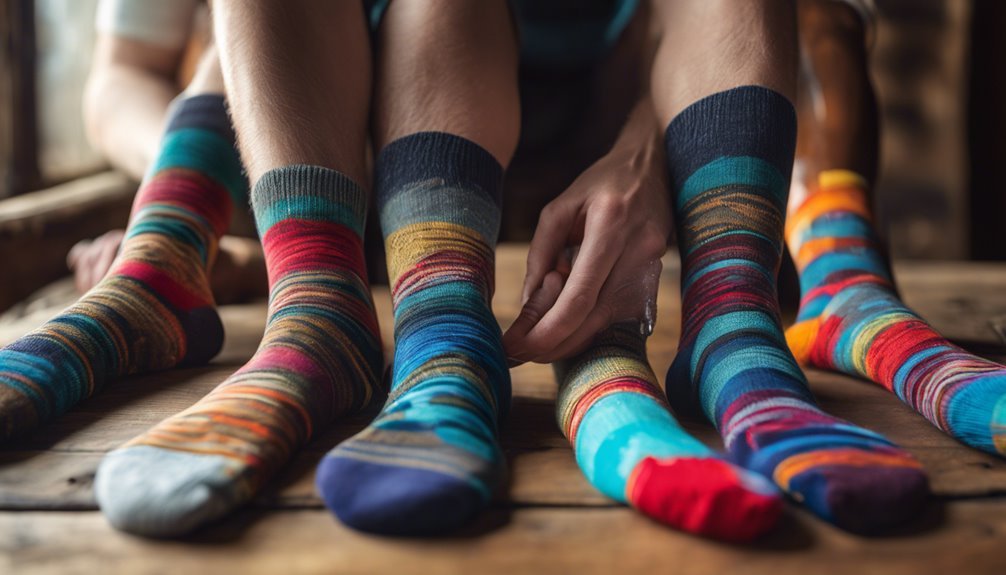
When you consider the sock industry, ethical labor practices are vital for sustainable growth. Implementing fair wages initiatives not only enhances worker satisfaction but also boosts productivity, which can lead to better quality products. Additionally, transparency in production processes is essential; it enables consumers to make informed choices and fosters trust in brands committed to ethical standards.
Fair Wages Initiative
As consumers increasingly demand transparency in the products they purchase, the sock industry is taking significant steps toward ethical labor practices through initiatives like the Fair Wages Initiative. This effort aims to guarantee that workers receive a living wage, creating a fair trade environment that empowers laborers. Here are three key aspects of the initiative:
- Wage Standards: Establishing baseline wages that meet or exceed local living costs.
- Worker Rights: Advocating for safe working conditions and the right to unionize.
- Supply Chain Accountability: Making sure brands are held accountable for labor practices throughout their supply chains.
Transparency in Production
The Fair Wages Initiative is just one part of a broader movement pushing for transparency in production within the sock industry. As consumers, you care about ethical labor practices, and brands are responding. Analyzing the supply chain, many companies are now disclosing their production ethics, ensuring fair wages and safe working conditions. This transparency not only builds trust but also empowers consumers to make informed choices.
| Brand | Transparency Level | Ethical Practices |
|---|---|---|
| Brand A | High | Fair wages, safe labor |
| Brand B | Medium | Limited disclosures |
| Brand C | Low | No clear standards |
| Brand D | High | Certifications verified |
| Brand E | Medium | Third-party audits |
The Impact of Consumer Awareness on Brands
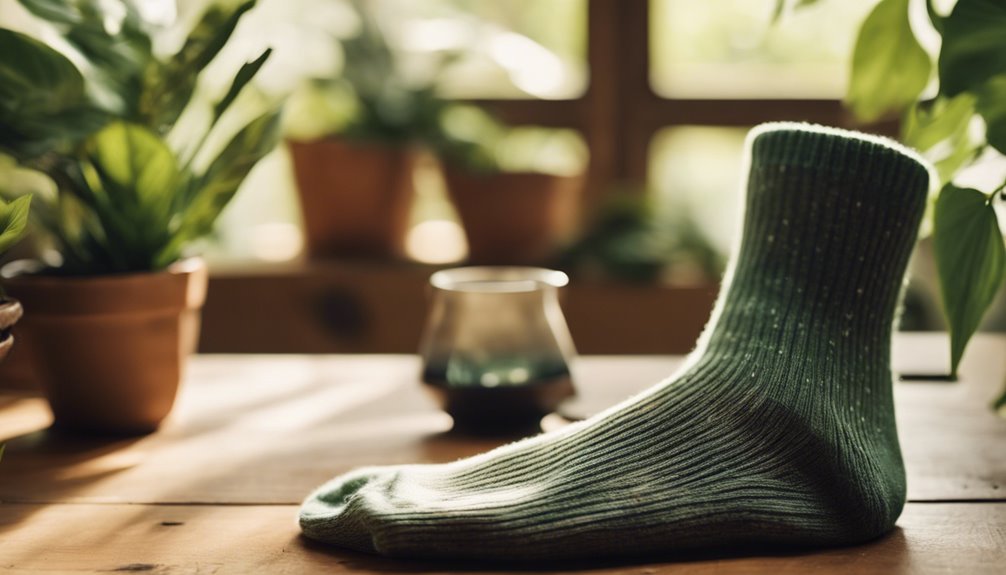
How does consumer awareness shape brand strategies in the sock market? As you become more informed about sustainability, your preferences evolve, driving brands to adapt. This shift can profoundly impact brand loyalty, as consumers increasingly favor companies that align with their values. Here are three ways consumer awareness influences brands:
- Sustainable Materials: Brands are now prioritizing eco-friendly fabrics to meet your demand for responsible choices.
- Ethical Production: Transparency in manufacturing processes enhances trust and brand loyalty among conscious consumers like you.
- Social Responsibility: Companies that engage in community initiatives resonate more with consumers, fostering a deeper emotional connection.
Collaborations and Partnerships for Sustainability
When you look at the sock market, partnerships are proving essential for sustainable progress. Brands are increasingly collaborating to enhance material sourcing and to implement community engagement initiatives, creating a ripple effect of positive change. These strategic alliances not only boost impact but also align with consumer demand for responsible practices.
Brand Collaborations for Impact
While many brands in the sock market endeavor for sustainability independently, collaborations have emerged as a powerful strategy to amplify impact. By forming sustainable partnerships, brands can leverage shared resources and expertise to create innovative solutions. Here are three key benefits of impact collaborations:
- Increased Reach: Partnering with other brands allows for a broader audience and enhanced visibility in the sustainability space.
- Resource Optimization: Shared knowledge and materials can lead to more efficient production processes and reduced waste.
- Collective Credibility: Collaborations can enhance brand reputation, as consumers are more likely to trust brands that actively engage in sustainable initiatives together.
These impact collaborations not only foster innovation but also drive meaningful change in consumer behavior, ultimately reshaping the sock market for the better.
Material Sourcing Partnerships
As the demand for sustainable products grows, brands are increasingly recognizing the importance of material sourcing partnerships to enhance their environmental impact. By collaborating with suppliers focused on eco-friendly materials, companies can drive material innovation that meets consumer expectations. These sustainable partnerships not only provide access to recycled or organic fibers but also foster transparency in supply chains. For instance, brands utilizing recycled plastics in their socks can reduce landfill waste considerably. Studies show that businesses engaged in sustainable sourcing can improve their market position, appealing to conscious consumers who prioritize ethical consumption. Ultimately, these strategic alliances empower brands to innovate while promoting a greener future, aligning profit with purpose in the evolving sock market.
Community Engagement Initiatives
By fostering community engagement initiatives, sock brands can create meaningful collaborations that enhance sustainability efforts and strengthen local ties. Engaging with local communities not only boosts brand loyalty but also drives innovative practices. Here are three effective strategies:
- Community Workshops: These can educate consumers on sustainable practices, allowing them to actively participate in the design process.
- Local Collaborations: Partnering with local artisans can lead to unique, eco-friendly sock designs that reflect community identity.
- Impact Assessments: Regularly evaluating the outcomes of these initiatives helps brands ascertain their practices align with sustainability goals, fostering transparency.
The Future of Sustainable Fashion in Footwear
Although the footwear industry has historically been a significant contributor to environmental degradation, the future of sustainable fashion in this sector is increasingly promising. Brands are now prioritizing sustainable design, focusing on eco-friendly materials and production methods. This shift is integral to embracing a circular economy, where footwear is designed for longevity and recyclability. Research shows that consumers are willing to pay more for sustainable options, indicating a market trend towards ethical purchasing. Innovations like biodegradable materials and take-back programs are emerging, allowing you to contribute to environmental sustainability. As awareness grows, the potential for a truly sustainable footwear market becomes more tangible, offering you freedom of choice without compromising the planet's health. Embrace this change for a more sustainable future.
Frequently Asked Questions
How Can Consumers Identify Truly Sustainable Sock Brands?
Identifying truly sustainable sock brands isn't as hard as you think. Check for brand transparency and consumer awareness; look for certifications and materials. Don't let skepticism hold you back from supporting eco-friendly choices you believe in.
What Certifications Should I Look for in Eco-Friendly Socks?
When searching for eco-friendly socks, look for certification types like GOTS or OEKO-TEX. These indicate sustainable practices and eco-friendly materials, ensuring you're supporting brands committed to environmental responsibility without compromising on quality or comfort.
Are Sustainable Socks More Expensive Than Traditional Options?
Sustainable socks can feel like a refreshing change, but they often come at a premium. A cost analysis reveals that a price comparison shows you'll invest more upfront for eco-friendliness and quality.
How Do Sustainable Socks Affect Foot Health and Comfort?
Sustainable socks often feature breathable materials and advanced moisture management, enhancing foot health and comfort. You'll notice reduced odors and improved temperature regulation, allowing your feet to feel fresh and free throughout the day.
What Are the Long-Term Benefits of Switching to Sustainable Socks?
Switching to sustainable socks offers long-term benefits like reduced environmental impact and enhanced social responsibility. You contribute to a healthier planet while supporting ethical practices, ensuring your choices align with your values of freedom and sustainability.

